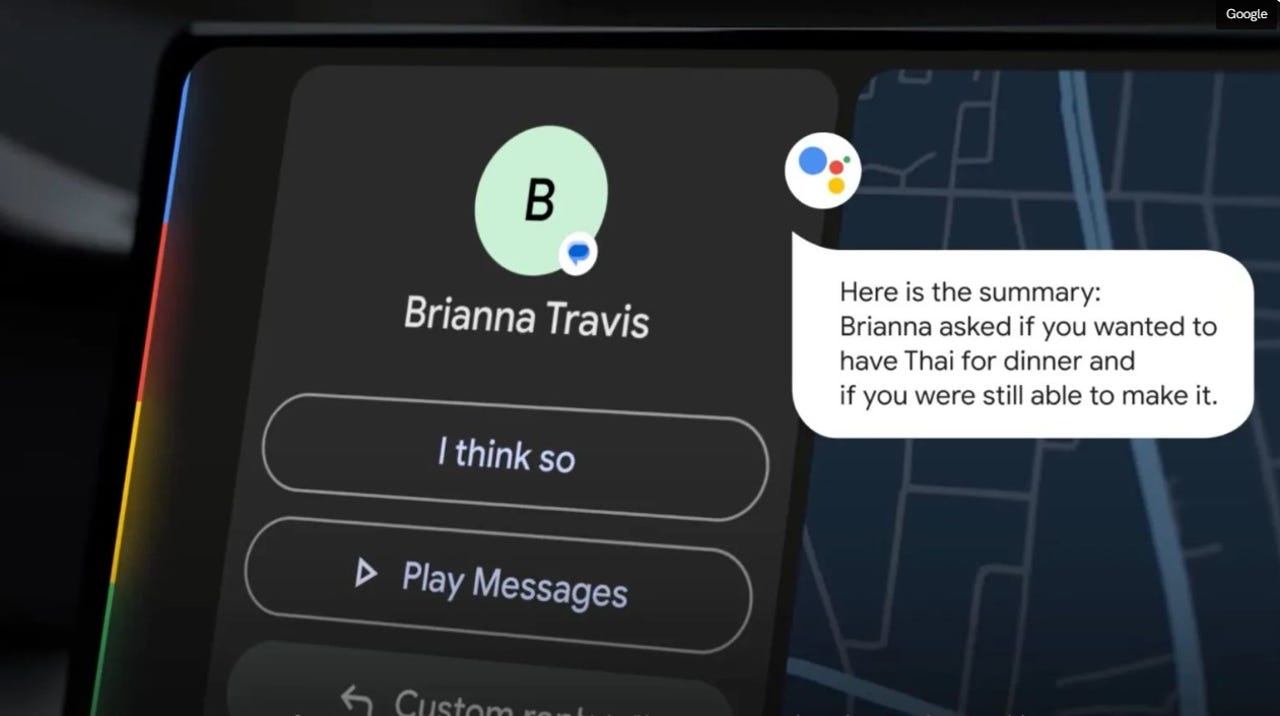
































When the Samsung Galaxy S24 launched last month, it came packed with AI-powered features, including Magic Editor, Circle to Search, live language translation, and more.
At the same time, Google announced several new AI features for Assistant -among them the ability to summarize long messages and group chats while connected to Android Auto.
Also: A smartphone without apps? This AI assistant aims to replace them all
That feature hasn't officially launched yet, but thanks to a new support document on the Google Community help page, we have a better look at how it's going to work.
First up, Google addresses a big privacy concern and explains that Assistant will not log messages or summaries, and that interactions will not be used to train large language models. However, since AI is being used to generate message summaries, the company admitted that there may be mistakes.
Once this feature is live, you'll need to opt-in to use it. This can be done either in the Android Auto settings or in the notifications menu under the traditional settings area, and the feature can be turned off at any time.
You'll also have an opportunity to turn on this feature the first time you receive a message longer than 40 words while connected to Android Auto.
What kind of messages will this feature summarize? Google explained that if you get one long message from a single person or multiple messages in succession from a single sender or group text, those messages will be summarized when you tap "Play aloud." Otherwise, the company noted, the messages will be read without AI summarization. If you receive multiple messages from multiple conversations, those will be read one by one.
Also: 2024 may be the year AI learns in the palm of your hand
In an example provided by Google, a contact sends a long message asking about dinner plans. Instead of reading out the entire message, Android Auto simply says, "Here is the summary: Brianna asked if you wanted to have Thai for dinner and if you were still able to make it." Several quick response answers are provided.
There's no word as to when this feature will roll out, but given that a support document exists already, it shouldn't be too far in the future.
 Hot Tags :
Innovation
Hot Tags :
Innovation